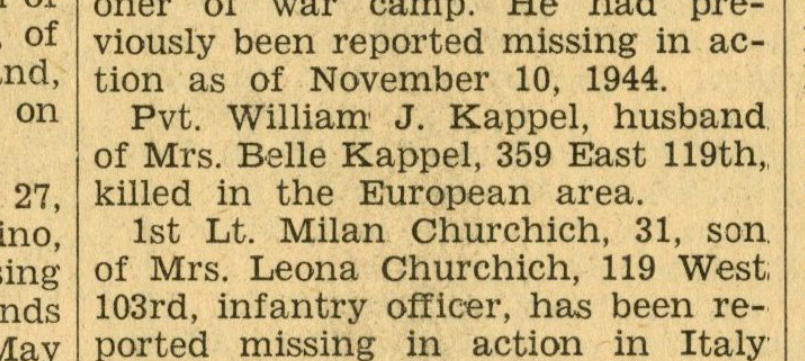I decided to test the effectiveness of Diahan Southard's shared DNA matches technique, which she outlined in her presentation, "Shared DNA Matches - The Only DNA Tool You Will Ever Need," to find missing ancestors in my family tree, from RootsTech 2023. The basic idea is to use shared matches to identify ancestors that are missing from your family tree. You know your great-grandparent's great-grandchildren are your 2nd cousin matches. If you are missing a set of great-great grandparents you can use the technique as follows. If you have a good 2nd cousin match you can separate matches for the known set of great-great grandparents by marking this match couple with a colored dot or note, using the shared matches feature at the DNA companies, to find a set of missing great-great grandparents. The leftover matches are likely related to your missing ancestral couple. To discover who they are, you need to determine how each of these leftover matches is related to each other and which couples they share.
In my case, I have a brick wall on my mother's paternal side. We don't know the identity of a set of Campbell 3rd great-grandparents, who would be the parents of our ancestor Sarah "Sally" Campbell. I followed the technique outlined in the presentation and marked the shared matches of our best match related to this line of the family. I have been using a similar technique already by making notes to record matches with the names of shared ancestral couples, and I was also often recording the child they match through. However, I didn't use the best match technique to find matches to mark. I haven't kept up with marking matches, so I don't have every match marked. Just marking the best matches' shared matches on a brick wall line is something that is doable and not overwhelming.
After marking those matches, I came to the same conclusion I had already come to. We likely are related to matches who descend from George Lafayette Campbell. I reached this conclusion by searching for DNA matches with the surname Campbell on their trees, and their Campbells were from Tennessee, as the children of my Sarah Campbell stated.
While performing this exercise, I discovered that we don't have many matches on our brick wall line. Most of my mother's matches are on the known couples' lines. There weren't many leftovers. Perhaps the Campbells don't have many descendants, or not many of them have taken a DNA test, or my mother didn't inherit much DNA for that line.
George Lafayette Campbell was likely a cousin of my Sarah Campbell. He was in the same generation as Sarah. Sarah's family migrated to Indiana, while George's family stayed in the south. The names of his parents are unknown, and no records have been found naming them.
Is the shared matches feature the only one we need? In my case, no. I have another ancestral line from the same place as George Lafayette Campbell. I also have a Browning family who lived in Greene County, Tennessee. I've created a chromosome map in Genome Mate Pro, and I have good matches on the Browning line and have been able to map the chromosomes for this family. I found some Browning segments overlapping with the Campbell segments I have. I believe chromosome mapping is necessary to establish how we are related to matches from the same rural areas. The overlap isn't much but I need more segment data to establish this is nothing to worry about.
I do believe that you need to mark shared matches, but this needs to be done along with chromosome mapping to ensure that you are related in the way you believe. Chromosome mapping isn't strictly triangulation; it's filling in your chromosomes with segments as completely as possible. By filling in a chromosome map you can also spot gaps where your missing ancestors might fit. Using 2nd cousins and other good matches is the best way to establish where a segment came from. Use large segments to name smaller ones.
Most of our ancestors lived in rural agricultural communities. We can be related to our matches in more than one way. We need more than one tool to establish how we are related.
We often need both tools, a chromosome browser, and shared matches; and any other tools available. A chromosome browser doesn't bite; it has never bitten me yet. At Genome Mate Pro, you just upload your match segment data, and there is a way to name the segments you can confidently identify. Both techniques are easy, and not that time consuming.
We often need both tools, a chromosome browser, and shared matches; and any other tools available. A chromosome browser doesn't bite; it has never bitten me yet. At Genome Mate Pro, you just upload your match segment data, and there is a way to name the segments you can confidently identify. Both techniques are easy, and not that time consuming.





